From Cory Gunz to Lil Romeo, Diggy Simmons and Sun God, there is an increasing presence of children of famous emcees picking up the microphone. There is an active element of fatherhood in Hip Hop, and shows like MTV’s mini-series Son of A Gun bring this to the light.
However, perhaps the tradition in Hip Hop is to mentor. There is more than one case of artists looking out for each other, and outside of just business or musical responsibility, artists taking youth under their wings and showing them the industry and craft with care. At its core, this is what fatherhood in Hip Hop looks like, and it just so happens that some of Hip Hop’s biggest stars of all-time had this kind of relationship with older, more seasoned peers. With Father’s Day weekend upon us, HipHopDX wanted to pay tribute to the devoted father/son relationships in Rap. It’s not in their blood, it’s in their music and lyrics, and it made a world of change.
Kanye West and No I.D.
As “Big Brother” indicates, a 1990s Chicago star producer/emcee mentored Kanye West into the field that would make him famous. Today, they work together on some of the biggest records on the planet, including Jay-Z‘s “Run This Town”  and ‘Ye’s “Heartless”
and ‘Ye’s “Heartless”  . Back in the late ’90s though, No I.D. helped Kanye find his passions by inviting him to Common studio sessions, presumably during the timeless One Day It’ll All Make Sense recordings. Interestingly enough, both men balance a knack for sampling and instrumentation, and low key slow jams as well as aggressive anthems – all in the name of Windy City Funk. With history together throughout last decade, the pair is actively working together, including on Big Sean‘s debut Finally Famous, dropping next Tuesday.
. Back in the late ’90s though, No I.D. helped Kanye find his passions by inviting him to Common studio sessions, presumably during the timeless One Day It’ll All Make Sense recordings. Interestingly enough, both men balance a knack for sampling and instrumentation, and low key slow jams as well as aggressive anthems – all in the name of Windy City Funk. With history together throughout last decade, the pair is actively working together, including on Big Sean‘s debut Finally Famous, dropping next Tuesday.
Classic chemistry: “Gorgeous”  by Kanye West featuring Kid Cudi and Raekwon (co-produced by No I.D.) (from My Beautiful Twisted Dark Fantasy, 2010)
by Kanye West featuring Kid Cudi and Raekwon (co-produced by No I.D.) (from My Beautiful Twisted Dark Fantasy, 2010)
Jay-Z and Jaz O
Now in his early forties, Jay-Z’s professional Rap career started under the guidance of Marcy Projects’ first national emcee: Jaz-O. Five years older than Jay, Jaz put the teenager on his 1989 Word To The Jaz release, on the video single “Hawaiian Sophie” (as Jay Zee). Jay would also hop on the more street-minded “The Originators” a year later, on Jaz’s sophomore LP, To Your Soul. More than just shine, the elder emcee’s fast-rapping was a dominant trait in the early Jay-Z recordings, and still reappears in his raps from time-to-time, as heard in “Go H.A.M.”  As for the mentor/mentee relationship, the duo soured after Jaz l/k/a The Big Jaz, declined a contract to Roc-A-Fella Records, after he produced early Jay hit “Ain’t No Nigga”
As for the mentor/mentee relationship, the duo soured after Jaz l/k/a The Big Jaz, declined a contract to Roc-A-Fella Records, after he produced early Jay hit “Ain’t No Nigga”  . Jay would go on to work under the tutelage of rappers like Big Daddy Kane, another Brooklyn native. The pair has been trading disses for the last nine years, but through the bitterness Jay still acknowledges the time together on his ’08 Ludacris guest-verse, “Shout out to Grand Master Flash and to Caz and even Jaz’ bum ass.”
. Jay would go on to work under the tutelage of rappers like Big Daddy Kane, another Brooklyn native. The pair has been trading disses for the last nine years, but through the bitterness Jay still acknowledges the time together on his ’08 Ludacris guest-verse, “Shout out to Grand Master Flash and to Caz and even Jaz’ bum ass.”
Classic chemistry: Jay-Z’s “Nigga What, Nigga Who (Originator ’99)” featuring Big Jaz (from Volume 2…Hard Knock Life (1998)
Nas and Large Professor
Before collaborations were common-place, Main Source‘s first album had a deep cut in “Live At The Barbeque”  that introduced the 1991 world to Nasty Nas. History proved that Main Source was Large Professor‘s show, and the emcee/producer went to work on his star pupil, recording a legendary demo that would evolve into Illmatic. Although Nas would achieve notable hits with the likes of DJ Premier, Trackmasters and Salaam Remi, his core work is that with his mentor. Much of the emcee’s early rhymes allude to the street-stuck nature of his Flushing mentor. Despite catalog classics like “Halftime” and “It Ain’t Hard To Tell,” Extra P was omitted from Nas albums until 2001’s Stillmatic, although Nas checked in on two LP solo works. The pupil often claims to be working with the man who helped him get his first deal, as eager ears await to hear the results.
that introduced the 1991 world to Nasty Nas. History proved that Main Source was Large Professor‘s show, and the emcee/producer went to work on his star pupil, recording a legendary demo that would evolve into Illmatic. Although Nas would achieve notable hits with the likes of DJ Premier, Trackmasters and Salaam Remi, his core work is that with his mentor. Much of the emcee’s early rhymes allude to the street-stuck nature of his Flushing mentor. Despite catalog classics like “Halftime” and “It Ain’t Hard To Tell,” Extra P was omitted from Nas albums until 2001’s Stillmatic, although Nas checked in on two LP solo works. The pupil often claims to be working with the man who helped him get his first deal, as eager ears await to hear the results.
Classic chemistry: “Halftime” by Nas (produced by Large Professor) (from Illmatic, 1994)
2Pac and Digital Underground
Although Suge Knight appeared to be 2Pac’s father figure at the end of his life, at least in the music industry, he came into the game with very different dispositions. ‘Pac began as a dancer and roadie with late 1980s outfit Digital Underground. Shock G’s troop scored a massive hit with “The Humpty Dance,” at a time when Tupac Amaru Shakur was reportedly carrying their crates to performances. Two years later, the first disciple of the Oakland, California outfit was featured on their single, “Same Song.” Although his bars were limited, ‘Pac hammered the 1991 appearance four months before his own Interscope Records debut hit stores. As ‘Pac rose to become an icon, he remained close with Shock G and the gang, and brought the mentors back for his 1993 hit, “I Get Around” as well as for production on 1995 hit “So Many Tears.” At the end of his life, 2Pac was reportedly assembling a group, The Havenots with Shock, Yaki Kadafi and Candyman 187. Sadly, the world was never able to hear 2Pac’s career come full circle.
Classic chemistry: “Same Song” by Digital Underground featuring 2Pac (from Nothing But Trouble soundtrack, 1991)
Big L and Lord Finesse
When late 1980s emcee/producer Lord Finesse heard Harlem teen-aged emcee Big L in a record store in 1990, history was made. Simply out of the goodness of his heart and pursuit of great rapping, Finesse took the youngin’ under his wing. With a lethal verse on 1992’s “Yes You May (Remix),” one of the most self-confident emcees of all time had his breakout moment. Like Finesse, Big L was a master of comedic punchlines and unflinching cockiness on the microphone. Brought into the fledgling D.I.T.C. fold with Showbiz & A.G., Finesse helped Lamont Coleman score a major label deal with Columbia Records, and begin three years of recording towards the cult-classic Lifestylez ov da Poor & Dangerous debut, which the Bronx producer co-created nearly half of. After L’s murder in 1999, Finesse remained involved with his estate and late mother in upholding Big L’s status as one of the great emcees of his day.
Classic chemistry: “Yes You May (Remix)” by Lord Finesse featuring Big L (from From The Crates To The Files: The Lost Sessions, 2003)
Bone Thugs-N-Harmony and Eazy-E
Eazy-E signed the Cleveland, Ohio collective while on tour around 1993. The quintet allowed Eazy-E to transition away from N.W.A.‘s fallout and reestablish Ruthless Records as a trailblazer in Gangsta Rap. Helping the group of teenagers hone their signature sound, Eazy co-signed his second most-successful act throughout their 1994 EP, Creepin’ On Ah Come Up. The work also featured production and vocals from the N.W.A. founder (along with DJ Yella). Although their time together was limited, the loss of their mentor was instrumental in the writing and video of multi-platinum 1995 single, “Tha Crossroads.” The group would run into financial disputes throughout the ’00s with Eazy’s widow Tomica Woods-Wright on a solo and group level, but continue to uphold the man who pulled them out of the lakeside city in interviews and songs – as well as cosigning E’s rapping son. Two years can make such a major difference in legacies.
Classic chemistry: “Foe Tha Love of $” by Bone Thugs-N-Harmony featuring Eazy-E (from Creepin On Ah Come Up, 1994)
Snoop Dogg and Dr. Dre
After leaving N.W.A. in 1991, Dr. Dre needed a voice. After his half-brother Warren G played him a 213 demo tape, Dr. Dre set his ears on Long Beach, California’s Snoop Doggy Dogg. The smooth-voiced teen was influenced by Dana Dane, Slick Rick and Smooth B., and had a knack for capturing the pre-L.A. Riots climate heard on The Chronic. After the “Deep Cover”  soundtrack teaser, Snoop was Dre’s vocal complement in making one-two punch classics, The Chronic and Doggystyle. The pair would be estranged for five years due to label politics and confusion. A second round of hits in “Still Dre,” “Next Episode” and “Bitch Please” added to the classic chemistry, as the pair has made music largely under the mainstream radar in the last decade. Detox may change that, as sessions have already released, capturing the doctor and the dogg, still up to their same weed-scented tricks.
soundtrack teaser, Snoop was Dre’s vocal complement in making one-two punch classics, The Chronic and Doggystyle. The pair would be estranged for five years due to label politics and confusion. A second round of hits in “Still Dre,” “Next Episode” and “Bitch Please” added to the classic chemistry, as the pair has made music largely under the mainstream radar in the last decade. Detox may change that, as sessions have already released, capturing the doctor and the dogg, still up to their same weed-scented tricks.
Classic chemistry: “The Next Episode” by Dr. Dre featuring Snoop Dogg, Nate Dogg & Kurupt (from 2001, 1999)
Eminem and Dr. Dre
In the years when Dr. Dre wasn’t involved in a working relationship with Snoop, he struck platinum (many times over) in another lyrically-deft emcee who became a household name. Through Interscope Records Chairman Jimmy Iovine, Dre heard a witty and self-deprecating emcee from Detroit, Michigan. While Em’s major label deal pulled him from the underground Hip Hop community that initially embraced him, Dre and his staff of producers crafted Marshall Mathers into a voice for a generation. Em’s wit and messages were in tact as the emcee began to make anthems and message-driven songs for legions of marginalized Rap fans who could identify with the rapper’s poor beginnings and troubled home-life. Under Dre’s tutelage, Em also veered into becoming a respected producer and label executive, who has built a tight-knit circle of developing acts and longtime friendships in D12, Royce Da 5’9 and Obie Trice.
Classic chemistry: “Old Times Sake”  by Eminem featuring Dr. Dre (from Relapse, 2009)
by Eminem featuring Dr. Dre (from Relapse, 2009)
Big Pun and Fat Joe
Like Finesse and Big L, Fat Joe and Big Pun had a different kind of relationship than producer/rapper or traditional label exec. The two Bronx, New York peers bonded after Joe’s 1993 debut, and began recording in the mid-1990s, with Pun making his appearances on Crack’s sophomore album, Jealous Ones Envy. While Joe held down a Relativity-turned-Atlantic deal, he helped sign Big Punisher, a much more lyrically maneuverable emcee, to Loud Records (through Terror Squad) in 1997. As Pun made his entrance to the Rap, it revitalized Joe’s career, and the pair continued to become one of the most recognizable Rap duos of the day. The pair also released 1999’s The Album by Terror Squad. Although the crew would decimate a decade later, through several solo projects, Pun and Joe were as good a lyrical pair. In the decade since Pun died, Joe has actively honored his rhyme protege who helped make Da Fat Gangsta a household name in his own right.
Classic chemistry: “Twinz (Deep Cover ’98)”  by Big Pun featuring Fat Joe (from Capital Punishment, 1998)
by Big Pun featuring Fat Joe (from Capital Punishment, 1998)
Lil Wayne and Birdman
One of the most literal father/son Rap relationships is Cash Money Records’ Birdman and superstar artist Lil Wayne. Birdman had custody of the rapper as a teenager, after his own father died. The pair have been working together for over 15 years, even releasing 2006 collaborative album Like Father, Like Son. Birdman has been credited with giving Dwayne Carter a future from the cutthroat New Orleans streets, as Wayne brought Cash Money into the ’00s, as its biggest star after B.G., Juvenile, Mannie Fresh and a host of other acts left the label on bad terms. The business acumen of Cash Money has carried into Wayne’s Young Money empire, delivering Drake and Nicki Minaj as two of Rap’s biggest stars in the last two years. Few pairs on this list are as active as these two, and few tandems have history written together to this extent. Tattoos of each other on their bodies, you could bet a Bugati that this pair won’t likely separate anytime soon.
Classic chemistry: “Stuntin’ Like My Daddy” by Birdman & Lil Wayne (from Like Father, Like Son, 2006)
What other relationships like this exist in Hip Hop? Leave your thoughts in our comment section…
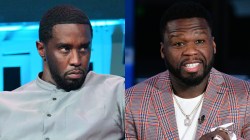

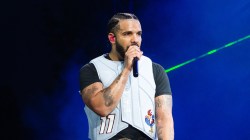
![50 Cent Shares Unseen Diddy Footage From Netflix Documentary: "[It] Shows You His Character"](https://hiphopdx.com/wp-content/uploads/2025/12/50-cent-diddy-documentary-trailer-unseen-footage.jpg?w=250)
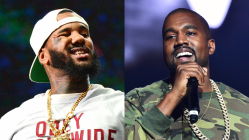
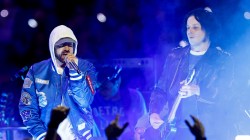
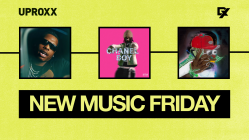
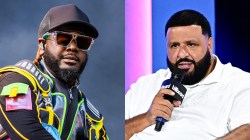
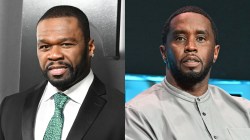
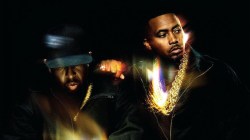
Black Milk & J Dilla
Talib Kweli & Jean Grae
Respect to Large Professor, Lord Finesse, Shock G., … all the rarely mentioned mentors.
I’d rather Nas work with Extra P again than anybody.
Crooked I and Horse Shoe G.A.N.G.
Literal older brother relationship.
Crooked I and Royce da 5’9″ talk about HSG – http://www.youtube.com/watch?v=CcnJycjsskI
Classic Chemistry: “Boy Looka Here/Go Getta” by Crooked I featuring Horse Shoe G.A.N.G. (Hip Hop Weekly 11, 2007)
Dont forget about 50 cent and Jam Master Jay. . . Eminem and Dre . . . and who can forget Will Smith and Tech 9???
Haha. Really? Will and Tech?
Everything Tech has he did by himself…
Sweet pick for the Eminem and Dre track…
wu-tang clan and shyheim
Shyheim never did shit after 1994.
Thats what Dr. Dre needs, he needs another Eminem or Snoop Dogg for Detox to come out. He needs to sign some up and coming rapper to help propel his album
would love that to be kendrick lamar!
It is Kendrick Lamar. https://hiphopdx.com/index/news/id.15389/title.kendrick-lamar-confirms-his-appearance-on-dr-dres-detox
Dx you forgot Kane and Jayz
Go read it again. In the jay and Jaz O section if you look they mentioned Kane and Jigga.
my bad
Waka Flocka Flame & Gucci Mane? Just fuckin around…..
Eminem & 50 Cent !
Mac Miller and Wiz Khalifa
I was hoping it was an article on ACTUAL fathers and rappers like Common/Pops and Nas/Olu Dara.
Lupe n CHILLY CHILL
kid cudi and kanye west?